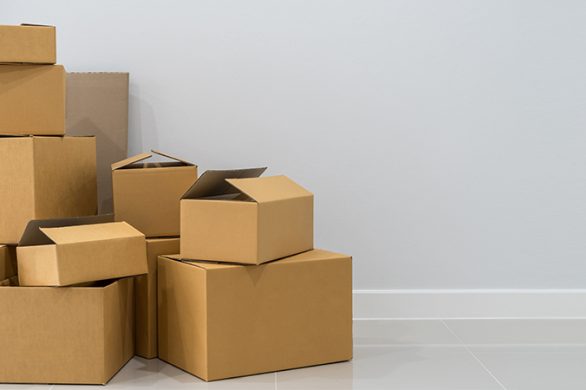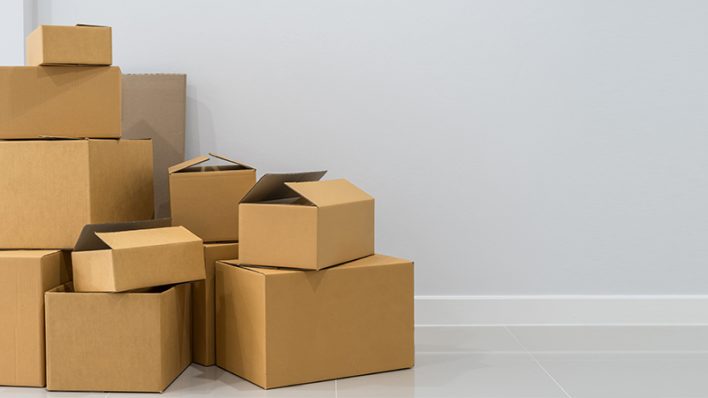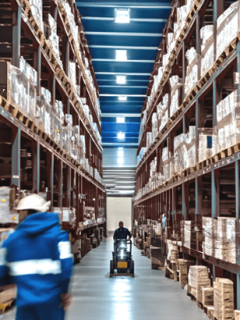2020 was a revolutionary year for the world of e-commerce. Quite a few newcomers moved up into the ranking of the top 1,000 online shops. Behind rising sales there is also an enormously large logistical effort: because the right goods should reach the customer undamaged and, above all, quickly. A central element of the logistics chain is order picking. In this article, we present new logistics technologies that can change your daily supply chain management: This is how Logistics 4.0 works!
E-commerce in 2020
On the one hand, the sector of German online shops grew by 12.4% over the course of the year – on the other hand, there are 17,400 more online shops compared to 2019. (Source:EHI). As recently as 2018, the largest three alone made Online shops in Germany net sales of 13.69 billion euros. Amazon dominates the market with 9.3 billion, followed by Otto with 2.99 billion and Zalando with 1.4 billion euros. This means that the three online shops still have an unassailable lead. But more and more players are playing along and fighting for their share of the “e-commerce cake”. In view of this scale, it is clear that nothing works without smooth processes and modern technologies: Logistics 4.0 – what approaches are there?
Big Data & Artificial Intelligence: Where do we stand in logistics?
For some years now, we have been hearing a lot in the media about Big Data or the accumulation of data in companies. This Big Data, applied to the field of Logistics 4.0 and combined with artificial intelligence, brings with it opportunities for the development of new logistics technologies. The common goal of these Logistics 4.0 – Warehouse technologies: The optimisation of the entire supply chain, based on data not only from your company’s activity, but also from external sources.The result is predictive models that make it possible, for example, to anticipate stock levels and thus organise deliveries in advance. Ultimately, these technologies help you better manage your logistics and warehouse operations . For example, certain models allow you to predict stock levels based on seasonality, market trends or even the selling price of a commodity.
These AI-based technologies can be directly integrated with other technologies that are already well established in medium and large warehouses: Warehouse Management Systems (WMS) or Enterprise Resource Planning (ERP). It is therefore a trend in logistics management that should continue to grow exponentially in the coming years.
Automation in the warehouse
A key point in the logistics chain: the assembly of various goods for shipment. But not all efficient warehousing has to rely on a high degree of automation. For medium-sized companies, this is usually also a question of cost and usually the investment is too high for these businesses and does not pay off in the long term.In warehouses where Logsitik 4.0 has not yet been introduced, the worker goes to the different shelves and collects the ordered goods. No major investment is necessary to take advantage of modern technologies. Even with small adjustments, major changes in warehousing can be achieved.
Modern technology for modern warehousing
Barcodes are by no means a new technology. Nevertheless, barcodes form the basis for modern warehousing. This is because the individual code of the goods enables the system to log the position of the goods in the warehouse as well as the incoming and outgoing goods. Each product is provided with a barcode. During storage and retrieval, the products are scanned: In this way, the goods issues and receipts are monitored and logged. With these measures, the goal of modern storage in the age of Logistics 4.0 has been achieved. The system records the inventory at all times and provides information about where which goods are located and in what quantity.But this technology is prone to errors. If the code is not read correctly, the serial number must be recorded manually by the employee. And this is precisely where the error rate increases and time is lost.
Picking with data glasses: Pick-by-Vision
AR, Augmented Reality, stands for the linking of digital data with reality: reality is augmented, so to speak. Methods that rely on augmented reality are extremely promising in Logistics 4.0. More and more companies are already using these new technologies in warehousing. One of them is pick-by-vision. This is an innovation in logistics: picking with data glasses. The required information is displayed directly in the picker’s field of vision via data glasses:- Storage space
- Article
- Withdrawal quantity
The advantages of AR in order picking
This means that processes in the warehouse can be made time-saving and uncomplicated. This is because the data glasses calculate the orders in such a way that the employee takes the goods from the shelves in a route-optimised manner and thus requires less time. Additional sensors such as an integrated camera for automatically scanning the barcode in the data glasses, a scale on the picking trolley or FRID wristbands, which confirm that the correct object has been picked, help to significantly reduce the error rate during picking. But not only the error rate is reduced, the picking employee is relieved and benefits from ergonomic advantages:- Without a scanner, the worker has both hands free and can concentrate fully on the work.
- Unnecessary walking distances are avoided by the planning of the system.
- The simplified work processes reduce the strain on the arms, hands and neck.
- In addition, information on work safety and protective clothing can be displayed, e.g. when lifting heavy objects.
But the selection of the appropriate storage method also plays an important role in order picking: if the ABC method is used, the order picker can reach the most frequent items without having to bend down or reach strongly upwards.
Higher employee satisfaction through better handling
Better handling increases employee satisfaction and binds skilled workers to the company in the long term. Studies show that 30 percent of employees have a negative attitude towards their employer if up-to-date technologies are not used. For more and more employees, technical equipment is a decisive factor in their decision to work for a company. By using tools such as data glasses and augmented reality, the company gains an innovative image, looks attractive to potential employees and retains current employees in the long term.Data glasses: The technology of the future?
The use of data glasses and augmented reality offers great potential in logistics. The technologies also enable small and medium-sized enterprises to modernise warehousing and take advantage of Industry 4.0. This not only increases efficiency, but also reduces the workload of employees. This in turn has a lasting effect on the company’s image.Anyone planning to use data glasses should follow these four steps:
Connected objects facilitate inventory management
Connected objects, or better known as IoT (for Internet of Things ) are already very present in our daily lives: home automation or voice assistants like Amazon Alexa or Google Home are proof of this. Why not use this IoT in warehouses to help the logistics manager better manage the supply chain?By equipping your warehouse’s racks or shelves with sensor systems that are themselves connected to a high-performance information system, you can track inventory in real time. Ultimately, the goal of this technology is also to support time-consuming and human error-prone physical processes and, above all, to maintain an accurate overview of your logistics operations at all times .
The exoskeleton: an emerging logistics technology against MSEs
The use of so-called exoskeletons is already no longer uncharted territory in the field of medicine, where it is mainly used as an adjunct in occupational therapy. The use of exoskeletons in production and logistics 4.0, on the other hand, is still in its infancy – and also seems somehow strange. But if you consider that 23% of all absences due to illness in Germany are caused by physical strain when lifting or carrying during work, the use of such aids seems promising here as well.The use of exoskeletons in industry and logistics is far from mature. Tests under real conditions have already taken place (and are taking place): Volkswagen, but also BMW or LG, for example, have been looking at this possibility for promoting employee health for years. Especially in the assembly of vehicles, a lot of work is done overhead or over the shoulder. Here, the use of exoskeletons considerably reduces the strain on the skeleton and muscular system.
Robotics: Welcome to Warehouse 4.0
Are you familiar with cobots or “collaborative robots”? These are robots that take over certain logistics processes instead of operators. This in turn allows them to concentrate on tasks where humans have a real added value.
For example, a cobot can completely take care of the packaging of products, while the human behind them ensures the quality of this packaging. A real asset for your logistics organisation and to avoid MSDs!
If these technologies catch on, they could significantly reduce drudgery in the warehouse in the coming years, speed up order preparation and help logistics service providers offer the best possible unpacking experience to their customers.
Technologies to optimise freight transport
Drones in the warehouse? As a logistics specialist, you know that the transport phase in your logistics chain plays a crucial role in the experience you offer your customers. They expect increasingly reliable shipments and deliveries via their chosen means of transport and with optimal traceability.We therefore see the emergence of technologies on the market that aim to optimise delivery quality , but also to rationalise transport costs:
- Transport Management Systems (TMS) now go further and become Transport Management Platforms (TMP). These are collaborative technologies that can collect more data (from the different users of the platform, but also about shippers, carriers and commission agents in the transport and logistics sector) to better track the shipments of service providers (road, maritime and others).
- Drones and autonomous vehicles are gaining importance day by day to deliver faster. These technologies are particularly well suited for use in urban areas or for out-of-the-way or hard-to-reach destinations.
- Automatic lockers are also evolving. They give customers the option to pick up their parcels at a secure location at any time. Enough to further improve the customer experience of your global logistics!

















